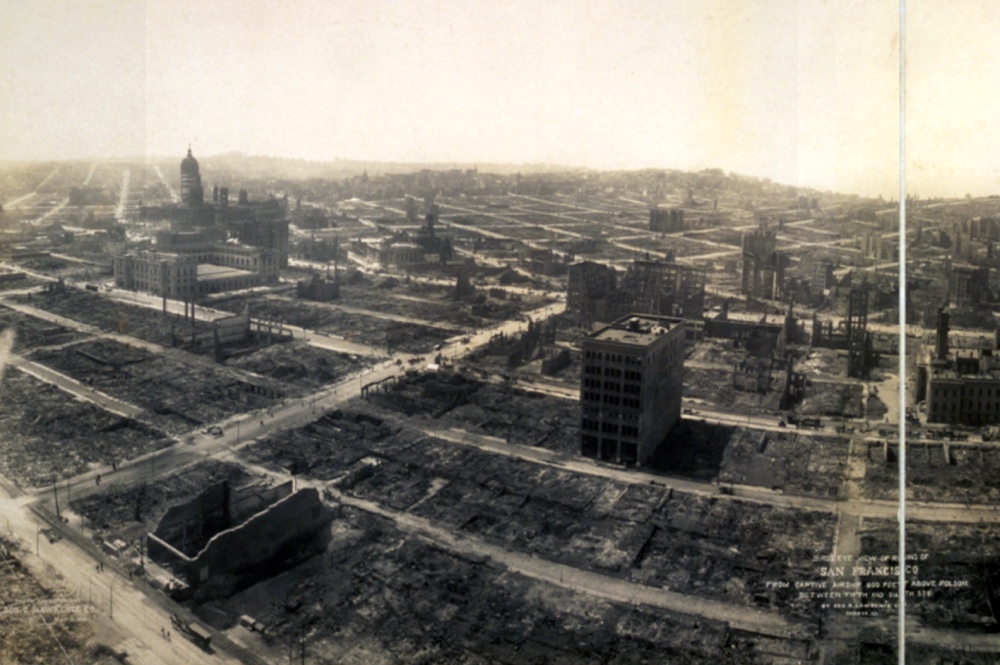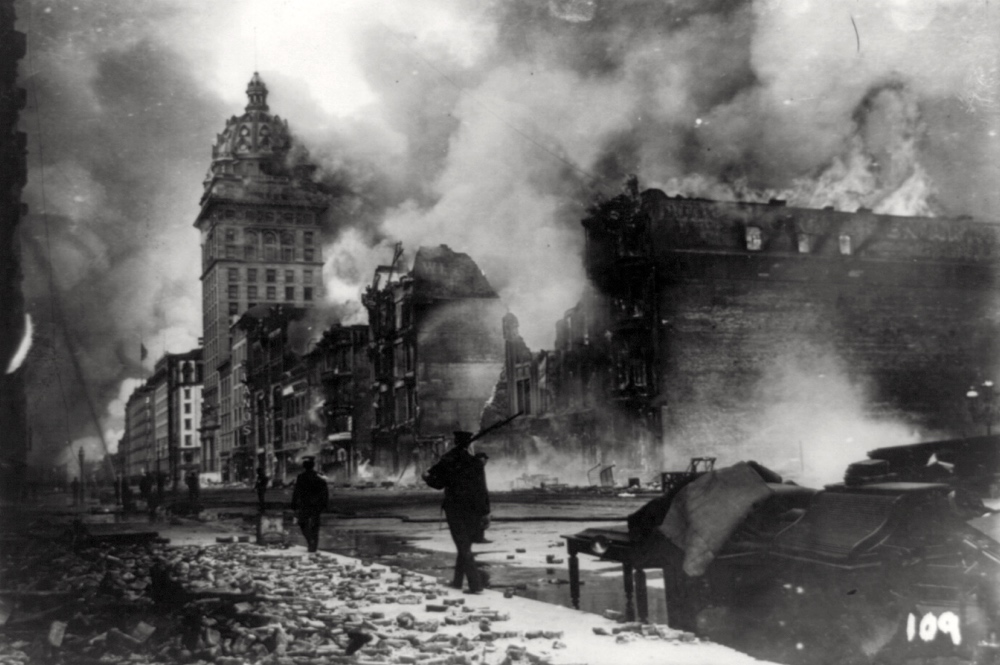
View of downtown San Francisco after the 1906 Earthquake and Fire.
San Francisco and its famous bay, originally inhabited by native Americans, became a possession of Mexico in the 18th century. In 1848, at the end of the Mexican-American War and the execution of the Treaty of Guadalupe Hidalgo, California became part of America, and two years later, a state.
Because San Francisco had been populated by Russian trappers (think Russian Hill), Chinese workers who mined and helped build the transcontinental railroad (think Chinatown), Mormons, miners, adventurers and others, the city grew rather haphazardly. And it grew exponentially during and after the discovery of gold at Sutter’s Mill in Coloma, California, in 1848, and the resultant Gold Rush.
By April 18, 1906, the population of San Francisco had grown to about 400,000. A little after 5 a.m. on that day, an earthquake estimated at 7.9 magnitude destroyed approximately 500 city blocks, including more than 28,000 structures. About 3,000 people were killed, and in a minute’s time, 200,000 more people were homeless. Fires broke out, and because the city’s water mains were destroyed by the original tremors, they burned virtually unchecked for several days, leading to much of the destruction.

450 blocks of San Francisco were completely destroyed.
Ultimately, rain put out the remaining fires. The other good news is that the large military population of San Francisco took control and organized tent cities for residents. The U.S. Congress appropriated funds to help the rebuilding and donations of food, clothing and money came in from all over the world. The city was rebuilt more logically, and its new growth resulted in a population boom.
Considered one of the U.S.’s largest natural disasters, the 1906 San Francisco earthquake reminds us how fragile yet how resilient people are. The population of the bay in 2021 was more than 4.7 million. While, like any major city, San Francisco has its problems, particularly crime and dealing with the homeless population, it still stands as a beacon to people throughout the world as a vital, thriving, quirky, colorful and incredibly interesting place to visit.

 Dylan gallagher
Dylan gallagher white wolf private tours
white wolf private tours